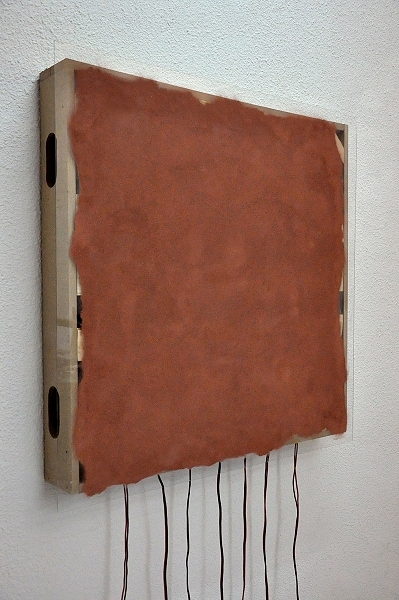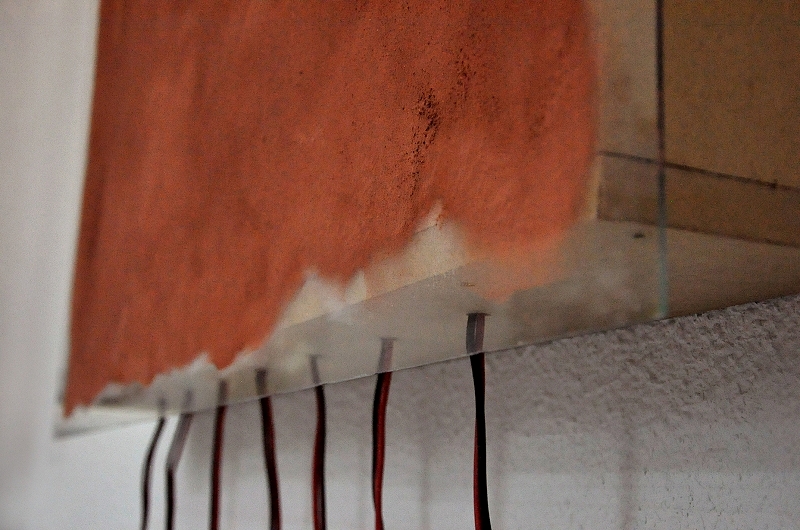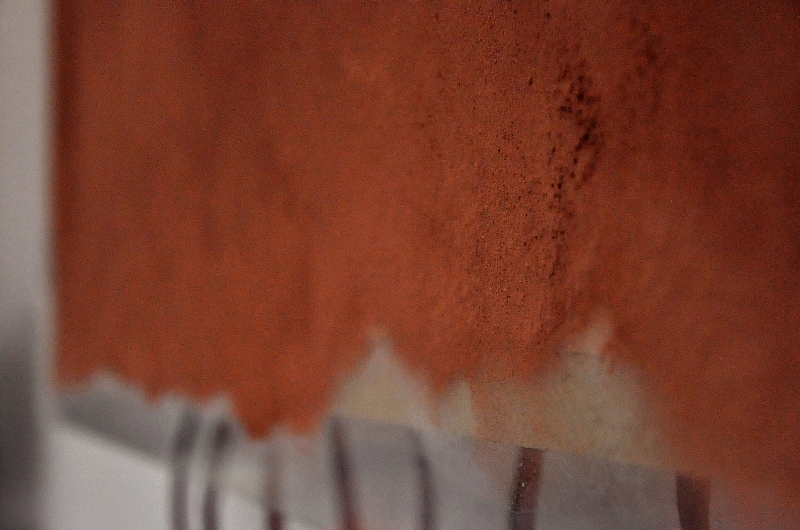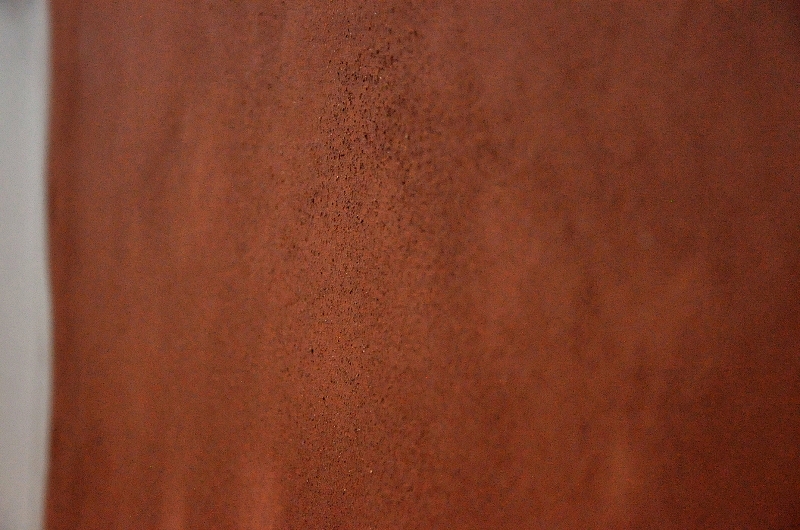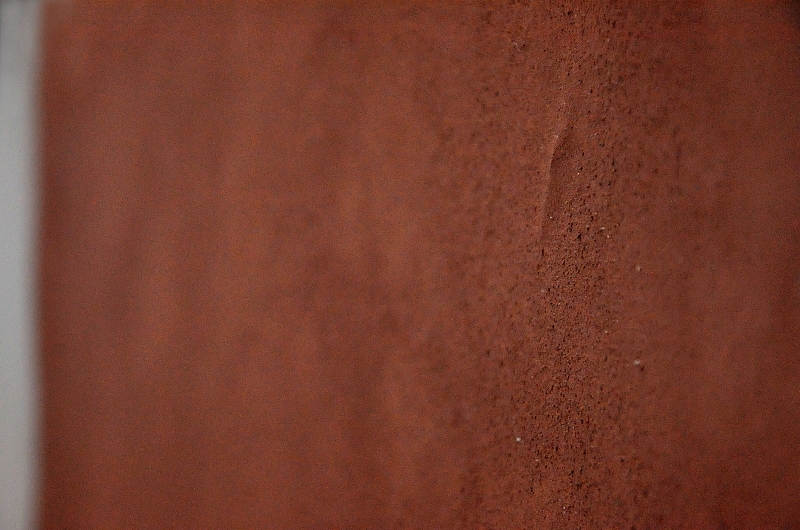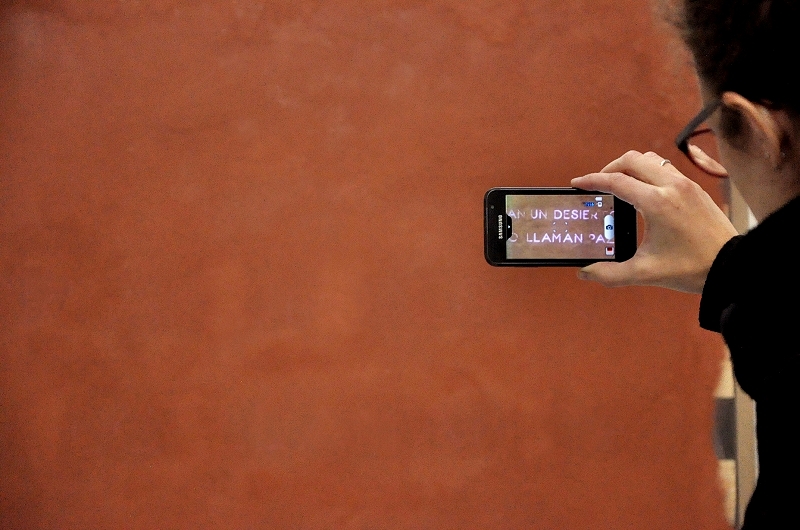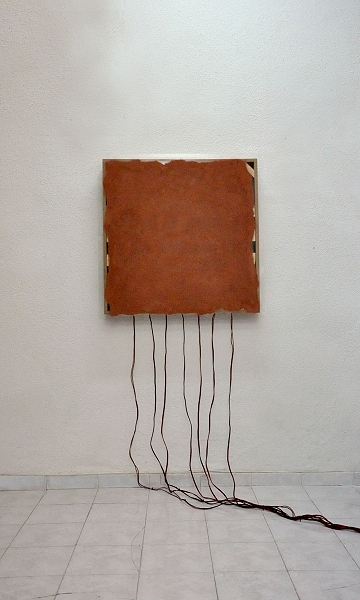Mineral Vision
Mixed media. Copper powder, wood, methacrylate, electronics.
2015

Visión mineral consiste en una pantalla de polvo de cobre sostenida por una estructura de madera. Cuando la superficie es observada a través de la cámara de un dispositivo digital -un teléfono movil o una tablet, por ejemplo- el siguiente mensaje, enterrado bajo el cobre, y escrito por primera vez por el historiador romano Tácito, se hace visible: “Crean un desierto y lo llaman paz”.
La pieza descubre al espectador la mirada característica que nos consigna insistentemente el contexto digital: la de un mundo asimilado, legible y procesado por redes de dispositivos ubicuos. El polvo de cobre, rastreado por los móviles de los espectadores -como la superficie de la Tierra, por drones y satélites- queda transformado en pantalla, en emisor de lenguajes humanos, en espera de dispositivos clientes.
Visión mineral, sin embargo, va más allá de la posibilidad de la decodificación. El cobre, elemento indispensable de la infraestructura digital, aparece en primer plano como una presencia material, bruta y a-lingüística. Frente a la explotación industrial de minerales y personas, el diálogo electrónico es un encuentro de escalas y duraciones, la geológica y la humana.
Si, como apuntaba Spinoza, “no somos nosotros quienes afirmamos o negamos algo de una cosa, sino que es ella misma quien afirma o niega en nosotros algo de sí misma”, Visión mineral afirma en nosotros las palabras del científico ruso de fin de siglo, Vladimir Vernadsky: “Somos minerales caminantes, minerales parlantes”.
Mineral Vision consists of a screen made of copper dust hold by a wood structure. When the surface is observed through the lens of a digital device -e.g. a smartphone or tablet- a message, buried in the copper, and written for the first time by Roman historian Tacit, becomes visible: “Where they create a desert, they call it peace”.
The pieces unveils to the viewer the characteristic gaze that the digital context persistently demands: that of an assimilated and legible world, processed by networks of ubiquitous devices. Copper dust, scanned by smartphones of viewers -as the surface of the Earth, by drones and satellites- becomes a screen, a human language emitter, waiting for client devices.
Mineral Vision, however, intends to transcend the possibility of decoding. Copper, a basic element within the digital infrastructure, appears in the forefront as a material presence, raw and a-linguistic. Instead of an industrial exploitation of minerals and humans, the electronic dialogue is an encounter of scales and durations, the geologic and the human.
If, as Spinoza noted, “it is never we who affirm or deny something of a thing; it is the thing itself that affirms or denies something in us”, Mineral Vision affirms in us the words of russian scientist of early 20th, Vladimir Vernadsky: “We are walking, talking minerals.”
Selected shows:
| 2017 | EX Arte Electronico y Experimental. Minihub (Madrid) |
| 2016 | Unspoken dialogues. Galeria Millenium (Lisbon) |
| 2015 | Premios de Arte Electrónico. JUSTMAD-COAM (Madrid) |
Selected publications:
| 2020 | Léa Perraudin, Digging Deep—Mud as Medium. Playful Encounters with the Soil Playful Participatory Practices, SpringerLink (NY) |
| 2016 | Jussi Parikka, A Slow, Contemporary Violence. Damaged Environments of Technological Culture Sternberg Press (Amsterdam) |
| 2016 | Ana Moutinho, Ana Teresa Vicente, Helena Ferreira (eds.), Unspoken dialogues Faculdade de Bellas-Artes da Universidade de Lisboa |
| 2015 | Jussi Parikka, The Alchemic Digital, The Planetary Elemental e-flux supercommunity, Planetary Computing (Is the Universe Actually a Gigantic Computer?) |
| 2015 | Jussi Parikka, The Constitution of Worlds Kunstkritikk |
